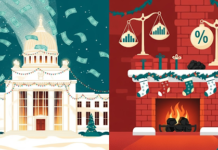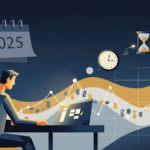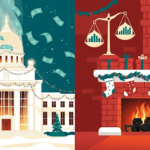Markets in a Fog: Tariff Uncertainty and the Road Ahead
In a market that loves clarity, today’s investing landscape feels more like navigating through a dense, uncharted fog. Tariff uncertainty is the name of the game, and even a four-day stock rally isn’t quite enough to clear the haze. While upcoming economic data like jobs numbers and inflation reports usually steal the headlines, the spotlight today is squarely on President Trump’s sweeping tariffs — and their ripple effects across global markets.
We delve into how trade negotiations are unsettling investors, why forecasting corporate earnings may be an exercise in futility, and where savvy capital allocators are cautiously placing their bets amid the uncertainty.
This Week I Learned will teach you something new and crucial about supply chain resilience (hint: it’s becoming the secret weapon of successful companies). And for a much-needed break, The Fun Corner shares a timely joke about market volatility and border taxes that’ll give you a chuckle — without needing a drink after.
Stay tuned — being informed is the ultimate hedge against uncertainty.
This Week I Learned…
Why the Smart Money Bets on Supply Chain Strength
Strength is built before the storm, and this storm looks like it’s just getting started.
If this week has made anything clear, it’s that companies with strong, flexible supply chains are quietly winning. While many businesses are paralyzed by tariff shocks, others have built resilient operations that can pivot fast — a strategic advantage that’s paying dividends.
Consider this: when tariffs impose higher costs on imports, companies with diversified suppliers across multiple countries have options. They can shift production, adjust sourcing, and mitigate the worst cost increases, while competitors with rigid supply chains take the full brunt of the impact.
This week I learned that supply chain resilience is not just an operational issue — it’s becoming a competitive moat. As investors face months (if not years) of trade policy shakeups, focusing on companies that adapt under pressure could be the more brilliant move for 2025 and beyond.
The Fun Corner
When Markets Play Border Patrol
Here’s a little levity for our tariff-tangled times:
Why don’t markets ever win at hide and seek?
Because every time tariffs are announced, they panic and reveal their positions!
Fun fact: Did you know? Historically, during major tariff wars, such as the Smoot-Hawley Act in the 1930s, equity markets exhibited more than three times the usual volatility. Borders are great for maps, but terrible for stock prices.
Who knew that a few lines on a trade agreement could make investors lose their cool so spectacularly?
The New Investing Normal: Trading Amid Tariff Shadows
The stock market may have racked up a few good days, but the specter of global tariffs looms larger than any recent rally. Despite strong backward-looking economic reports coming this week, like jobs data and GDP growth, investors aren’t celebrating yet — because the future looks murkier than ever.
Andrew Slimmon at Morgan Stanley summed it up perfectly: trying to predict company earnings amid this policy uncertainty is “borderline a waste of time.” When tariffs can be announced or removed overnight, models built on stable assumptions crumble quickly.
Since President Trump’s “liberation day” tariffs, the S&P 500 has slipped, while European and global stocks have risen. Phil Camporeale of J.P. Morgan now holds a neutral stance on international stocks, citing overwhelming uncertainty.
While negotiations could take years to resolve, there’s a flicker of optimism: progress, even incremental, could help stabilize markets. Meanwhile, smart money is chasing companies with pricing power, strong balance sheets, and flexible supply chains — assets that can weather policy whiplash.
Investors aren’t fleeing the market, but they are repositioning — and fast. Expect choppy waters ahead, but those who adjust now could find calmer seas when the dust eventually settles.
The Last Say
Investing in the Dark? Not Quite.
Despite a lot of noise, one thing is clear: tariff uncertainty is steering today’s markets, and smart investors are responding — not retreating. Rather than throwing in the towel, they’re focusing on resilient companies, maintaining diversification, and refusing to let headline fear dictate long-term strategy.
As the week unfolds, economic data might bring temporary confidence bumps, but it’s the progress (or lack thereof) in trade negotiations that will define market mood. Look for signals, not noise — and remember: policy risks are messy, but market resilience is built through smart positioning, not blind optimism.Until then, keep your portfolio balanced, your time horizon long, and your information sharp.
See you next week on The Market Pulse.

























